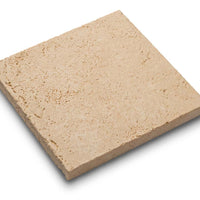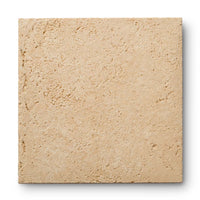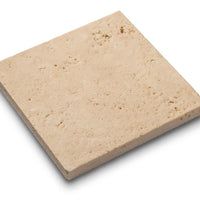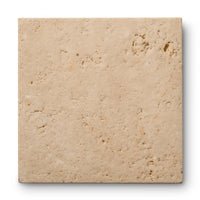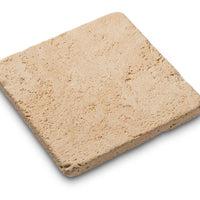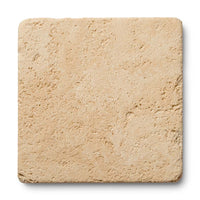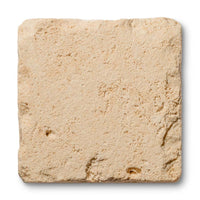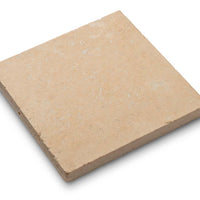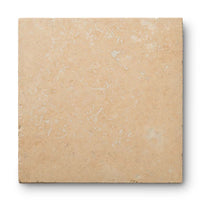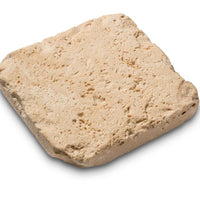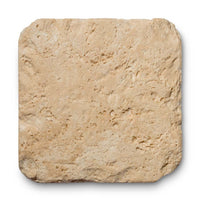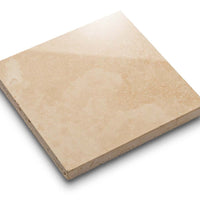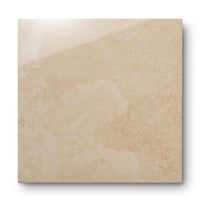Fireplace Materials: Best Stone For Fireplace
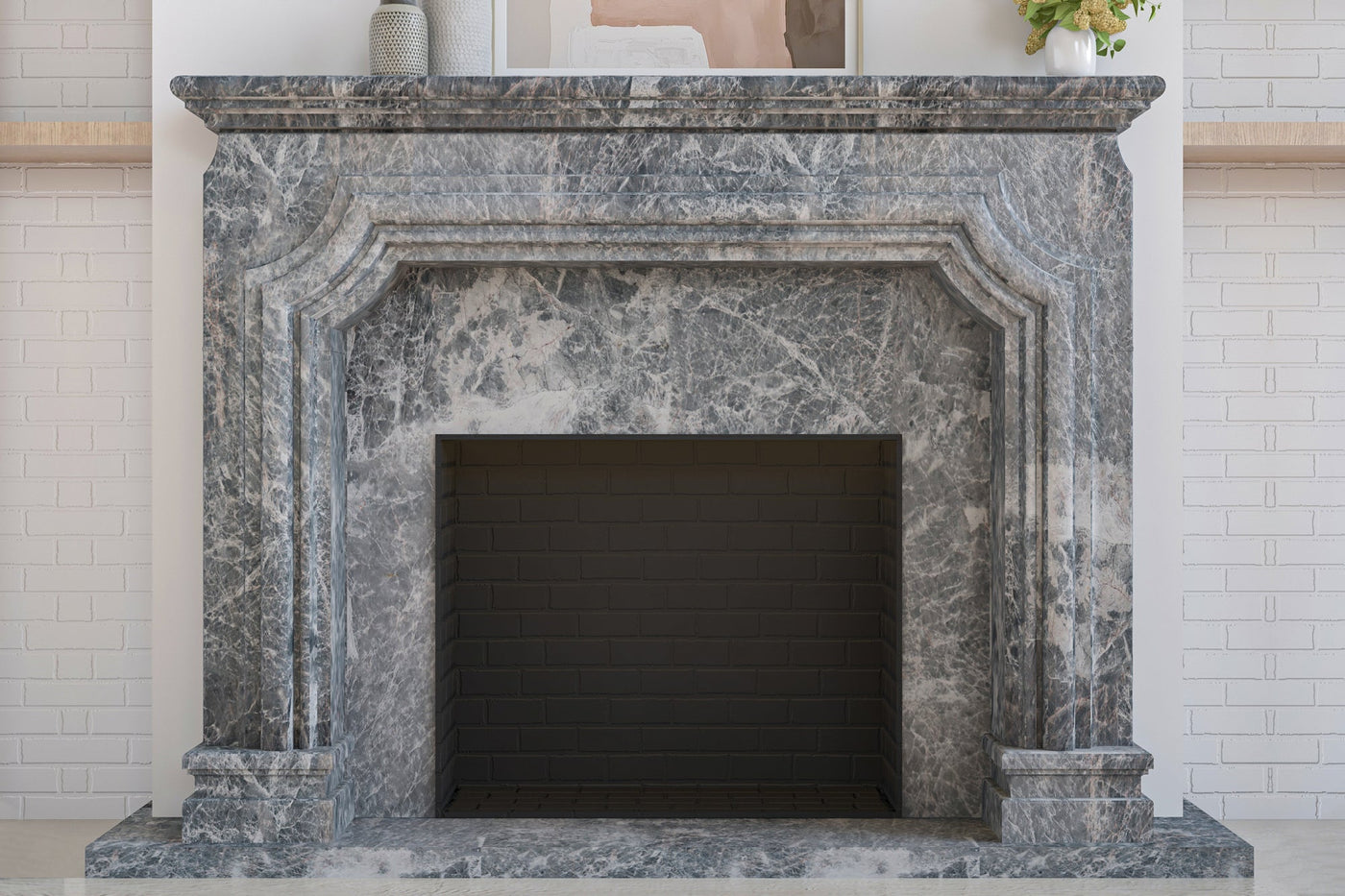
Every great space tells a unique story, but few architectural elements capture that narrative like a fireplace.
More than a source of utility and cozy ambiance, the fireplace also serves as a sculptural centerpiece. It naturally draws the eye, and materials like natural stone play a key role in defining the overall look and feel of your project. Marbles, travertines, limestones, and adoquines are popular choices renowned for their timeless beauty.
At MATERIAL Bespoke Stone + Tile, you’ll find stones and finishes to suit any aesthetic. This guide explores how to design a bespoke fireplace that feels both timeless and personal.
MATERIAL collaborates with design professionals to create pieces that feel personal and intentional. Among all materials, natural stone offers unmatched quality and durability. Its texture, strength, and ability to retain heat make it a preferred choice for custom fireplace design. The benefits of choosing natural stone include¹:
High heat tolerance
Durability
Ease of maintenance
Sustainability
Timeless beauty
Each variety of natural stone has unique features that make it ideal for specific design choices and applications. Here, we’ll discuss the most commonly used types of natural stone and how these stone options differ.
Nothing beats marble stone for class and elegance. Its high heat resistance and signature veining make it a top choice for modern stone fireplace ideas that blend drama with sophistication.
Adoquin is a type of quartz stone found in Mexico. It’s made from compressed volcanic ash and comes in many colors.² The base color is lighter with dark speckles sprinkled throughout the stone for an earthy, natural look. It’s both lightweight and durable, making it ideal for many projects, including fireplaces.
The popularity of granite is due to both its durability and the wide range of colors it comes in. It can be either polished for a smooth look or left in its natural, porous state for a rougher finish.
Limestone is best used for gas or electric fireplaces because it’s less heat-resistant.³ Wood fires burn hotter, and limestone will crack in very high temperatures. However, if you’re seeking a light-colored stone for your gas or electric fireplace, add a touch of luxury with limestone.
Travertine is a classic and contemporary favorite. No two fireplaces are the same, whether you opt for a Maderno Travertine surround or a Vintage Vein Cut. Available in a variety of natural stone colors and finishes.
The anatomy of your fireplace includes four elements: the hearth, mantel, firebox, and surround.4 Each of these components should coordinate with the other three for a cohesive and classy look.
Hearth – The hearth is the floor of the fireplace. It also includes the stones that stick out into the room and protect your floor from sparks, heat, and flames.2 It’s essential that the hearth is large enough to mitigate the risk of fire in your home, so most building codes require it to extend at least 20 inches from the firebox.
Mantel – The mantel rests over the firebox. The original purpose of the mantel was to keep smoke from coming into the room by pushing it back toward the chimney. Now, mantels are typically ornamental rather than functional. They can be made of wood, stone, or other materials. For a designer-worthy look, explore our stone fireplace mantel ideas that emphasize dimension and material contrast.
Firebox – The place where the fire burns in your fireplace is called the firebox. The firebox might be installed flush with the floor or it can be elevated.
Surround – The surround is the part of the fireplace that goes around the firebox. It can extend as far up as the ceiling or end at the base of the mantel.
Now that you’re familiar with the types of stone and the parts of a fireplace, let’s analyze a few other elements you’ll need to consider to ensure your stone fireplace design is the right fit for your home.
The location of your firebox will impact the design of your fireplace. For example, if the firebox is flush with the floor, the hearth will also lie flat. If the firebox is elevated, you’ll want to have a raised hearth. As an added bonus, a raised hearth can provide a warm spot to sit and relax by the fire.
Fireplaces can be constructed by using stones that fit together in several different ways, including:
Stacked – Think of a stone wall where each stone rests on top of the one below. The edges are jagged and aren’t perfectly fit together for a rugged, natural appearance. This is the look that a fireplace built with a stacked style of stone will bring to your home.
Uniform – When all of the stones have smooth edges and fit tightly together like puzzle pieces, you’ll achieve a uniform look. Often, the stone material is cut into perfect squares that lie flat next to each other like tile for a more modern look.
Cobblestone – Irregularly cut stones pieced together. The variety of shapes and sizes cobbled together to form interesting shapes and patterns that draw the eye directly to your fireplace.
The size of the room dictates the correct size for your fireplace. You want the proportions to be right so that you don’t throw off the balance of the room. For example, smaller rooms require shallower fireplaces while larger rooms can accommodate bulkier stone without being overwhelmed.
Ceiling height is also important to your fireplace design. We recommend that rooms with ceilings less than 12’ have a fireplace that covers less than 2/3 of the vertical w all space; oherwise it’ll make the room feel cramped. In contrast, soaring ceilings can handle taller fireplaces with ease.
When all the elements work together and complement the rest of your home, you’re left with a refined, winning look that’s sure to impress everyone who visits.
Natural stone makes a beautiful addition to any project, and we’re here to help you turn your vision into reality this season. To learn more about our bespoke process, schedule a virtual appointment or contact us to explore our showroom locations across the U.S.
Q: What’s the best stone for a fireplace mantel?
A: The best stone depends on your design goals and whether you’re looking to add an addition to your interior or exterior project. Marble, Travertine, Limestone, and Adoquin are all excellent options. When you contact one of our trained experts, we’ll help you select the perfect material for your space.
Q: How do architects and interior designers collaborate on fireplace design?
A: MATERIAL partners with trade professionals nationwide through our Trade Program, ensuring every custom stone fireplace meets the highest design and fabrication standards.
Q: What does the bespoke process at MATERIAL involve?
A: Every project begins with understanding your vision, whether you’re sourcing for a single fireplace or a full architectural concept. Our team assists with material selection, finding the right stone finish, and technical details to ensure precision from design through installation. The result is a one-of-a-kind piece crafted to your exact specifications.
Sources:
Natural Stone Institute. R-Value for Natural Stone. https://www.naturalstoneinstitute.org/stoneprofessionals/technical-bulletins/rvalue/
Natural Stone Institute. Glossary of Stone Industry Terms. https://www.naturalstoneinstitute.org/default/assets/File/consumers/glossary.pdf
S.F. Gate. What Type of Stone is Used for a Hearth? https://homeguides.sfgate.com/type-stone-used-hearth-92034.html
A Little Design Help. Light a Fire: The Parts of a Fireplace. https://alittledesignhelp.com/light-a-fire-the-parts-of-a-fireplace/
Please note: comments must be approved before they are published.
* indicates a required field
Our finishes are applied by hand, ensuring that each element of your order matches and blends together well. In some instances, you may notice a natural variation in the application of the finish. This is normal and should be expected with a handmade item.
